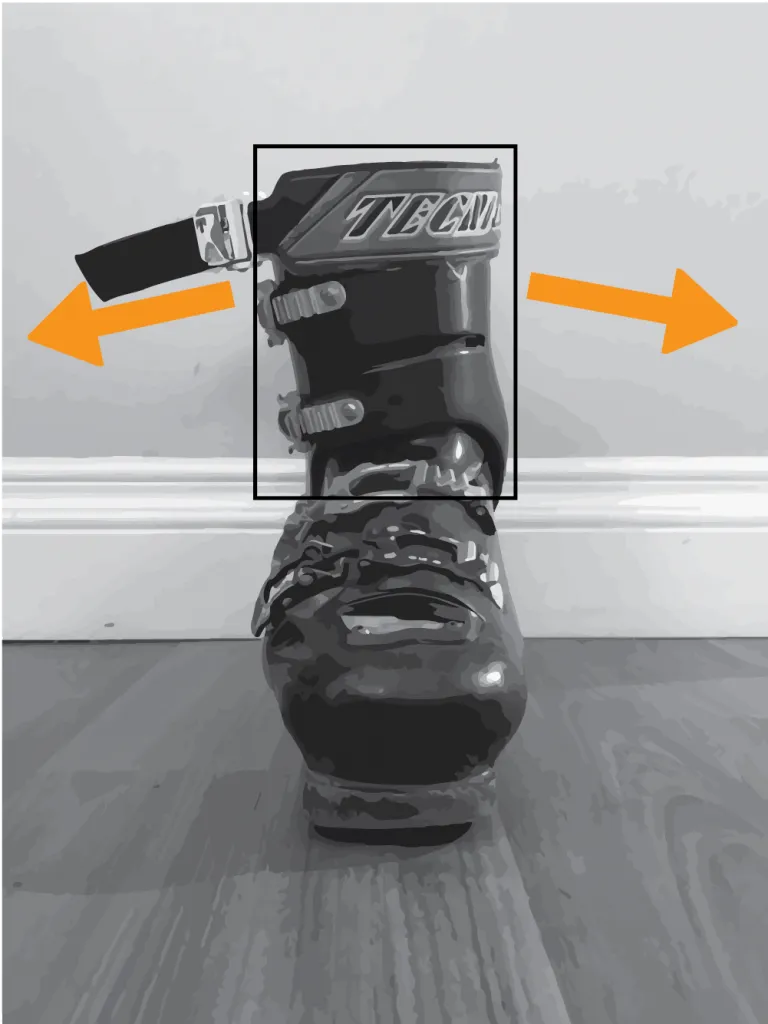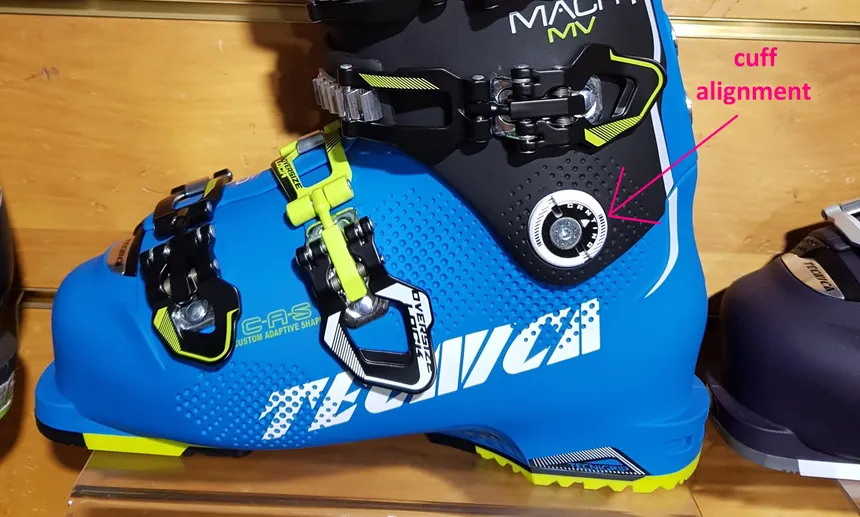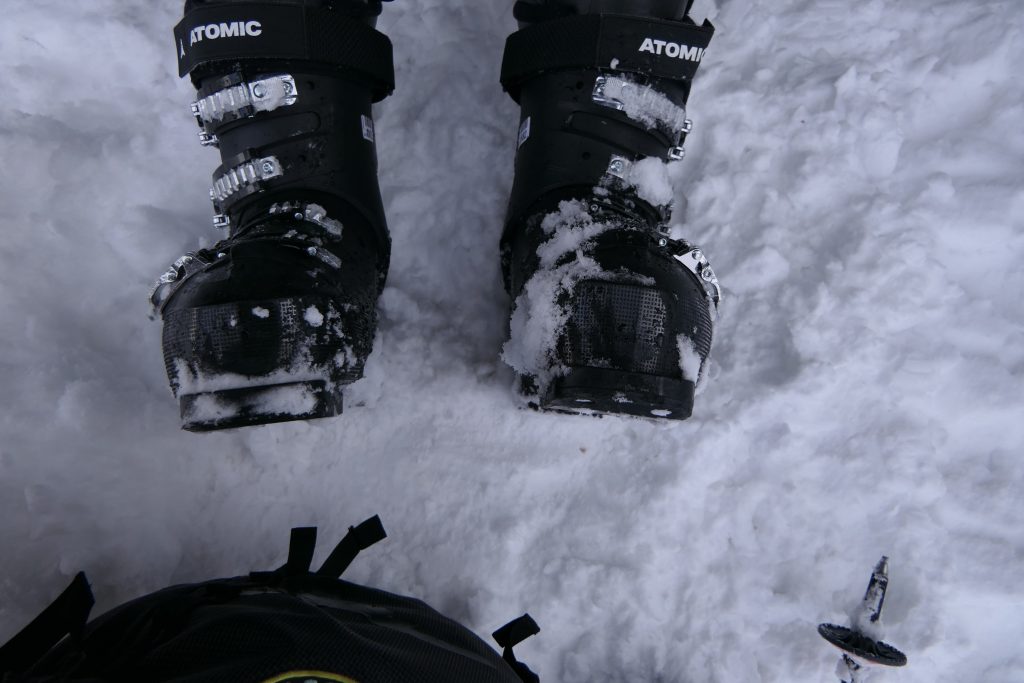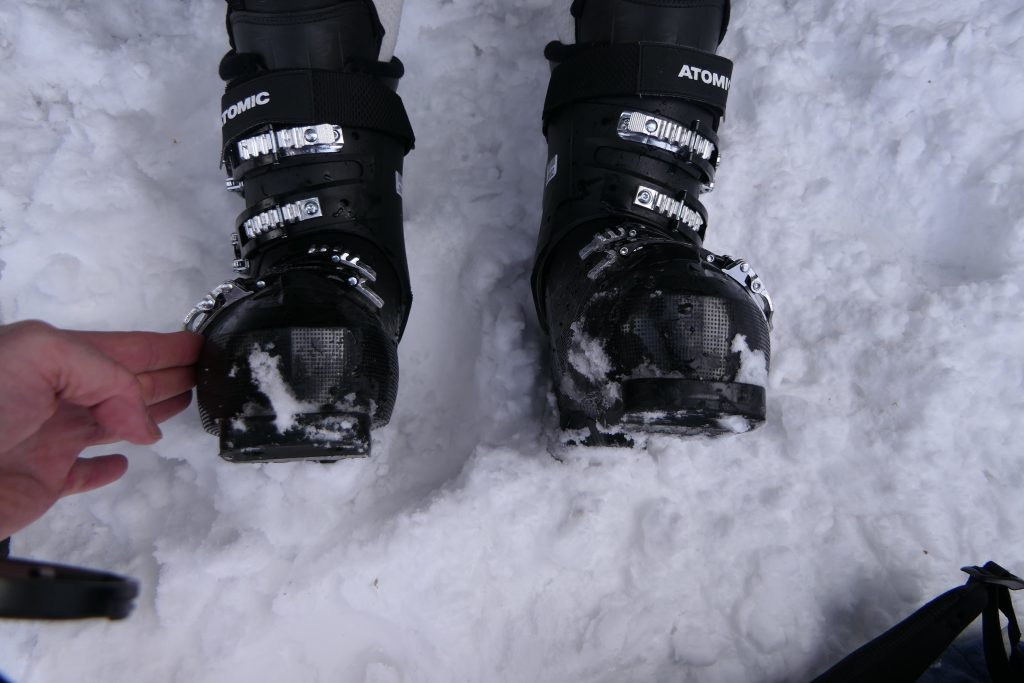Good progress on day one – difference in morphology made Laura stronger with the skating action and Tej more comfortable with speed and overall dynamics.
Skating on the Flat
Some people simply have no experience of skating so they need to be taught how to skate. Teaching skating is very simple. The skier simply diverges the ski tips very wide bringing the tails almost together. The instructor stands in front – with skis on but held close together and between the diverged tips of the student’s skis. A ski pole is held across the front of his body in two hands. The skier is then asked to grab the pole in the middle and push the instructor backwards. To make this happen the skier has to fall forwards and apply pressure. The inclination forwards pulls the diverged skis both onto their inside edges. Grip is required from the edges and a push from the legs so it helps if the feet are both rolled onto their inside edges (and adductor muscles engaged in both legs) to prevent the skis from flattening and skidding outwards.
The key focus here is to ensure that the ski grips and the centre of mass is displaced. Once the instructor starts to move backwards the skier will accelerate due to the continued pressure, forward inclination and continued pushing with the legs. The sliding forwards will feel safe due to the support in front and so the sensations of skating/sliding and propulsion will be experienced.
The final stage is for the skier to just hold onto the pole but without the instructor there – imagining that the instructor is there and going through all the same motions – pushing the imaginary instructor ahead. This time there is a natural acceleration and skating as a result.
The sensation of both feet being held on their inside edges and of pushing the centre of mass with the legs are fundamental to skiing – or more the “falling forward” of the centre of mass.
Ski Boot Alignment
Good quality ski boots have the ability to adjust the angle of the shafts laterally so that they can conform accurately with the skier’s morphology.


Shops always have you standing in the boots and bending the ankles, knees and hips to assess whether or not alignment is correct. Sometimes they even prepare supportive footbeds to be added and have special contraptions that you can stand on – but the approach is completely wrong (most of the time).
Around 1995 I figured out the right way to align – it’s done sitting on the edge of a bench/chair with the legs completely straight out in front (knee joints must be totally straight) – no weight on them – feet hip width apart (parallel) – toes vertically aligned (not with the toes rolled inward or outward) and hip joint flexed with the lower back straight and upright. The soles of the boots when correctly aligned are flat.
The top image below shows boots that need the cuffs canted toward the outside so the soles can be flat. If there is no canting mechanism or appropriate tool available then cutting cardboard or plastic shims to insert on the inner side of the shaft between the shell and the inner boot will have the same canting effect (this was done with the boots below as a temporary measure). The skier previously had trouble gripping with the inner edges when skating and had developed a very wide stance to compensate for the lack of edge grip and response. Sometimes people (often women) can have the opposite problem with the ski boot too much on edge – so canting the shaft inwards is necessary instead.


Skating/Adductors
Skiing is just disguised skating. The main difference is the skis are wide and have two edges. When diverging the skis outwards at the tips into a skating stance the skis want to flatten on the snow and the stiff shaft of the ski boots will pull the knees outward. The adductor muscles need to be engaged to hold the skis on their inside edges. This is a pattern of muscle use – the adductors of both legs contracting – that should be maintained when skiing parallel. This is partly dependent on the skier’s morphology. If the femurs are naturally directed inwards less adductor use might be appropriate but if slightly bow legged there may be a need to consciously work the adductors.
Only when snowplough braking should the adductors be released to widen the spreading of the tails of the skis from the hip joints.

The other difference between skis and skates: – it’s just that skis bend and scribe arcs on the ground and are generally used on slopes not flat lakes. Skating actions are fundamental for a skier’s development because they involve independent leg action where only one leg at a time is really used. Although skiers can stand on two feet the body is oriented specifically on one hip joint at a time (when turning) and has to function as if standing on one leg. Skating exercises such as skating step turns are helpful in developing basic skills. Skating turns use diverging skis (opposite from snowplough) and incremental stepping of the centre of mass inward toward the turn centre. This is ideally the first sort of turning that any complete beginner should experience – on flat terrain
Everting the Feet
When the skis are parallel the feet still “diverge” (as if skating) inside the ski boot – each foot being turned outward (everted). This obviously isn’t visible. This is to combat the tendency to twist the foot inwards to”turn” the ski directly -a mistake which flattens the ski and causes loss of grip.

Braking Snowplough
The key feature of a braking snowplough is that the adductor muscles (inside of upper leg) are totally relaxed – enabling a wider wedge directly from the hip joints. The wider the tails of the skis are apart the more edging there is just due to the angles of the legs with respect to the body.
The feet are “inverted” and pressuring their outside edges which slightly flattens both skis on the snow.
Braking and stopping are enabled by widening the rear of the plough – ski tips held almost together. Keeping pressure on the fronts of the skis is essential – standing on the balls of the feet and with pressure on the tongues of the boots through the shin bones – keeping the body perpendicular to the slope when sliding directly down the fall line (path a ball would freely take).
While it’s important to be able to stop in a straight line via this braking plough – even on steep terrain – some people will not be flexible enough or will carry too much body weight to brake – so it’s important to move on to turning as soon as possible.
Snowplough (Centre of Mass)
First turns are made by simply tightening the adductors in one leg only – to turn left it’s in the right leg. (With narrower ploughs then the adductors of both legs should be engaged -and if there is some speed then control becomes dependent on the turn shape and increased dynamics.)
Weight is always maintained on whatever ski is furthest down the mountain so that it can act as an effective brake. Changes of pressure on any ski are due to geometrical effects between the skis and the slope angle – not “transfer of weight”.
Starting a turn when traversing the slope in a plough requires only a slight movement of the Centre of Mass toward the downhill ski. This ski then slowly feeds the skier into a controlled turn. When facing directly down the fall line, the body being held constantly toward the inside ski of the turn, ensures the outside ski can takeover the completion of the turn. The pressure changes on the skis are automatic – just move the Centre of Mass toward the centre of the intended turn and keep it there from start to finish.
(There’s a tendency for habitual snowploughers to always push out the tail of the uphill ski to get it pointing downhill at the front. Better to push the tail of the downhill ski toward the upcoming turn centre, thus pulling the Centre of Mass that direction. This also reinforces the braking/pivoting action of that downhill ski.)
Dynamics 2 (Skis Parallel)
- Skis must be travelling forward – like a bicycle
- This is mainly about using the outside leg (start of new turn) to push the centre of mass into the centre of the new turn – for the whole duration of the turn
- There is no “balance” when skiing – dynamics is the physics of disequilibrium
- You are looking for stability from organised accelerations (ski technology!)
- Notice in the photos below the outside leg is essentially straight in a skating action (flexion for absorption and other purposes is primarily at the hip joint)
- The centre of mass goes down toward the snow – and to complete the turn it comes back up – like a motorbike in a turn
- There is no “Centrifugal Force” acting on the skier – only a deflection inward away from a straight line. This deflection is used to lift the skier up at the end of the turn – which involves “finishing” the turn – I.E. turning almost back up the hill.
- Remain square to the skis (follow the skis around the turn with your body) until you are really comfortable with movement of the centre of mass and clearly aware of moving it.
Model photos showing unambiguous dynamics…




